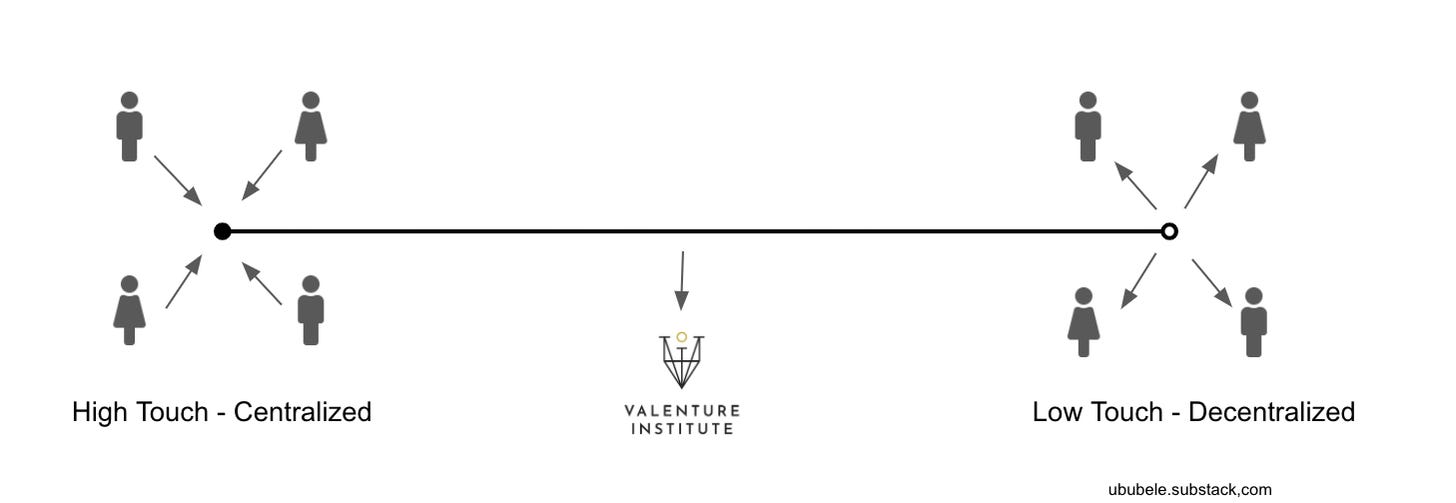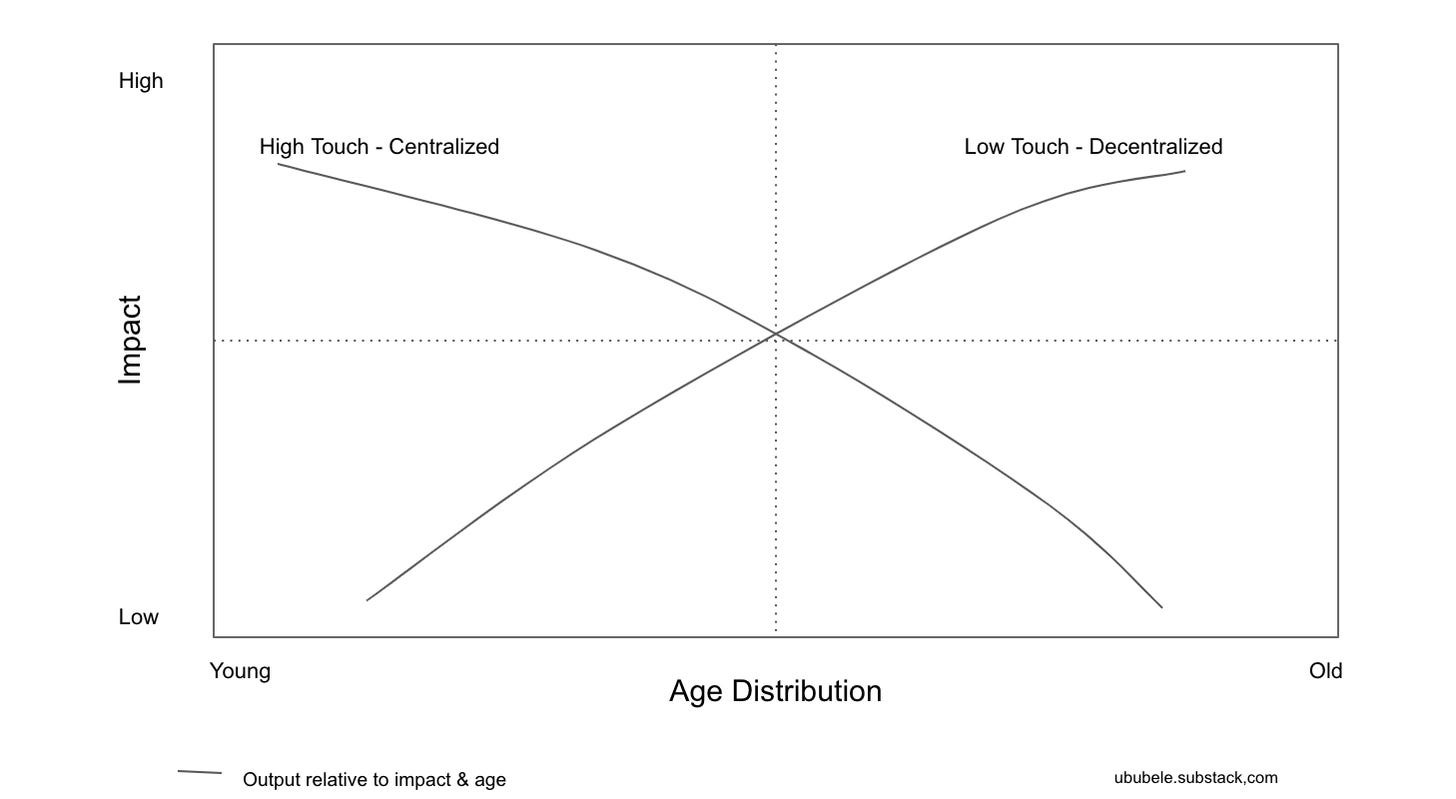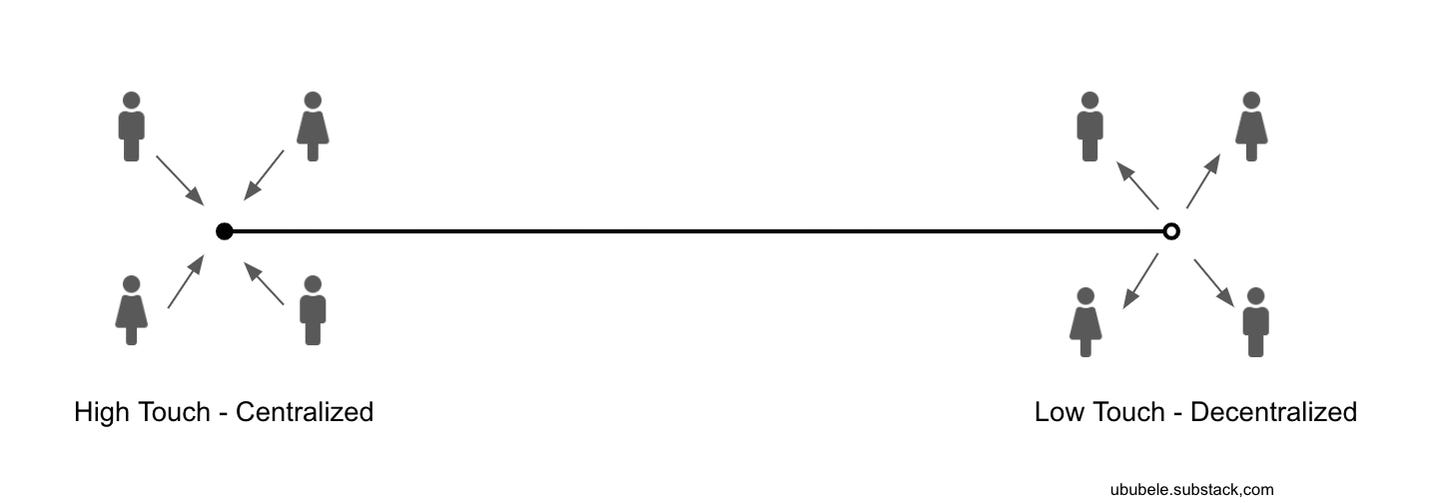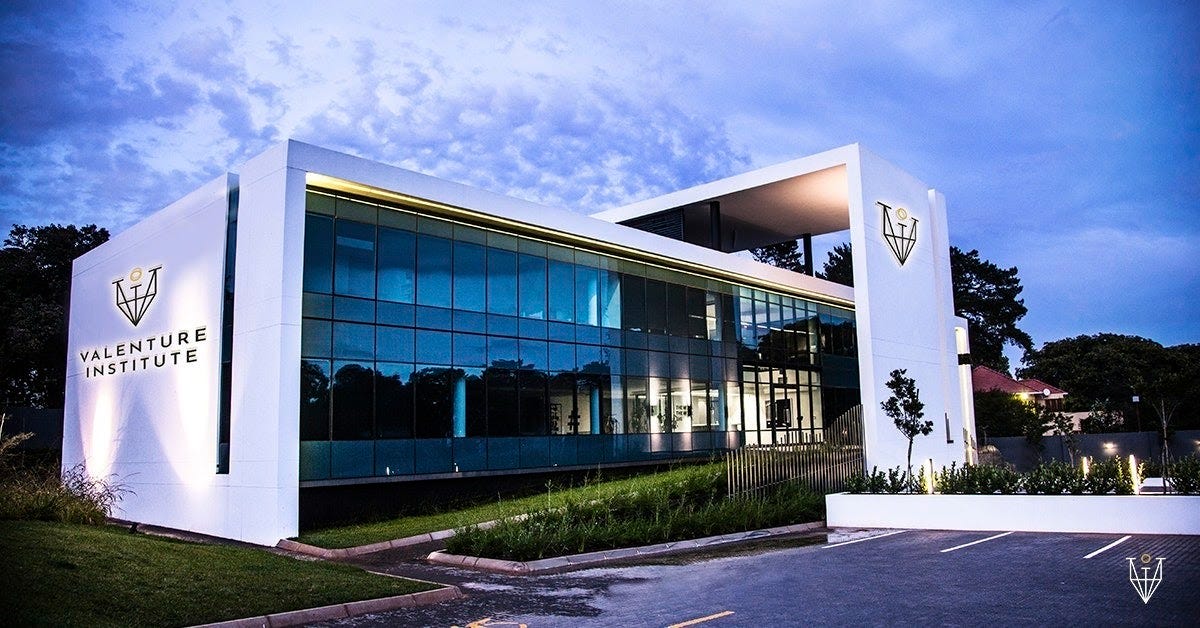Basic education is not a privilege in South Africa, it’s a right that everyone is entitled to, young & old. The Bill of Rights chapter clearly states that. Everyone has the right to receive an education that’s equitable, practicable & that needs to redress the results of past racially discriminatory laws & practices. Those who wish to establish & maintain their own independent institutions, can do so at their own expense, provided it does not discriminate on the basis of race, is registered with the state & maintains above, or comparable standards of education to that of public institutions.
Now we need to get into a debate of what that actually means beyond the basic right itself. At the core, the Constitutional Right to an Education states those 3 things as the basis for education in South Africa.
The South African educational system is split into 3 levels;
- Elementary — Pre-Primary
- Secondary — Primary & High School
- & Tertiary — University
That’s the basic split. The expanded split includes Phases & a National Qualification Framework (NQF) that begins after Senior Phase (Grade 9 or Standard 7 depending on when you were born).
 In 2009 South Africa’s education system was further split into two departments. The Department of Basic Education & The Department of Higher Education & Training. With the constitution mandating the ability for others to create a separate & independent education system, a parallel system was created based on the South African Schools Act of 1996, which characterized the national schooling system into two; public & independent.
In 2009 South Africa’s education system was further split into two departments. The Department of Basic Education & The Department of Higher Education & Training. With the constitution mandating the ability for others to create a separate & independent education system, a parallel system was created based on the South African Schools Act of 1996, which characterized the national schooling system into two; public & independent.
Others were & are free to create independent institutions & maintain them at their own expense. Independent institutions that, do not discriminate on the basis of race.
Private schooling has always been prevalent in South Africa, but I don’t want to focus on historical private schooling or examination bodies. Instead, I want to focus on the innovation, the Education Technology (EdTech) side, along a spectrum.
The two ends of the spectrum can be, let’s say — High Touch – Centralized innovation on one end, that looks & feels similar to current schooling & Low Touch – Decentralized innovation that we can describe as digital interactive education on the other end. Another way to define it is Synchronous & Asynchronous Learning but there’s no reason for us to use big words we don’t understand.
High Touch – Centralized
Let’s start on the first end of the spectrum. High Touch – Centralized learning. This is where all students converge on a central location & all learning happens with an engaged teacher.
As we have discovered, everyone who so chooses to do so, can establish their own institution. Some did. Back in 1998, Curro was founded by Fred & Renette Grant on their farm. Today Curro has grown to become the largest network of schools in South Africa & a listed company with a market cap of R4.8 billion (~ $282 million).
Maybe we should have established early that unlike public schooling, private schooling is mostly capitalistic & for profit. I apologize for that.
Curro didn’t start as a corporate, it was a single farm school but grew organically until growth exceeded expectations. This growth allowed the school to create another one, & then another one. Billionaire, Jannie Mouton through his private equity firm Paladin, invested R50 million for a 50% stake in 2009. Mouton accelerated growth. In 2 years, Curro went from 3 schools to 12 schools with 5 000+ learners. In its pre-listing statement in 2011, Curro believed they could have 200 schools with 300 000 learners in South Africa by 2020. As at the end of June 2020 they had 177 schools with 59 967 learners — remarkable growth.
Blended Learning
SPARK Schools — Primary School
In 2012 Stacey Brewer was in the second year of her MBA. Curro had set a precedent for private schooling. In an interview with Bruce Whitfield in 2018, Stacey said she wanted to do her MBA & then take her talents abroad & never wanted to be an entrepreneur. During her studies, she discovered through a mentor, a low-cost solution to primary education called Blended learning. Blended learning is a combination of online interactive tools & traditional classroom-based learning.
Stacey & her co-founder Ryan Harrison raised 4.5 million from Angels to build a low-cost blended learning, private school. This was called SPARK, short for — Service, Persistence, Achievement, Responsibility and Kindness.
Using a cost-effective rotational lab & flex model, Stacey has been able to scale & double the capacity of her school network. The goal the company set was 20 schools & 12 000 learners by the end of 2019.
“Stacey didn’t start out thinking she wanted to launch a business and trying to figure out what that would be. Instead, she found something she was passionate about — something she knew was broken and needed real, innovative solutions to fix”. – Nadine von Moltke-Todd Editor-in-Chief: Entrepreneur.com South Africa.
SPARK Schools’ align their curriculum with public education but go beyond by allowing learners to have an internationally competitive learning environment through blended learning models.
Valenture Institute — High School
 Moving along the spectrum towards the middle, somewhere between High Touch – Centralized & Low Touch – Decentralized we can find Valenture Institute. Founded in 2019 by Rob Paddock, the co-founder of GetSmarter, Valenture Institute wants to become a global high school.
Moving along the spectrum towards the middle, somewhere between High Touch – Centralized & Low Touch – Decentralized we can find Valenture Institute. Founded in 2019 by Rob Paddock, the co-founder of GetSmarter, Valenture Institute wants to become a global high school.
If that’s not an audacious goal I have no other idea what is.
Valenture Institute is taking a blended learning approach but will focus on being online-first accompanied by boutique campuses around the world.
source: twitter
Through this model, the company believes it can scale globally. Now the question is, what type of learner can afford such an education? it’s quite pricey (R5000+ per month for an 18-month curriculum). That cuts out most learners & families in South Africa. Then again, private schooling is for-profit & this might not be for everyone.
Innovators are trying to democratize private education by reducing the cost of schooling & implementing learning techniques that will allow the next generation of students to be globally competitive. Basic education is a huge problem in South Africa, year in & year out learners go without textbooks, state teachers are grossly underpaid & general infrastructure is often not conducive for education. It saddens me that another generation of learners will miss the chance at globally relevant education because 1. Poverty & 2. Government failure.
Low Touch – Decentralized
On the other end, we have Low Touch – Decentralized learning. This is where education happens in a decentralized manner driven mainly by online content & educational tools. Also, decentralized meaning education can happen anywhere & at any time not necessarily the platform itself is decentralized.
When people refer to EdTech they mainly reference online course academies like Udemy, Coursera & the rest. Short on-demand courses for upskilling. Some have been vertical-specific, such as Codecademy for digital skills.
From a university perspective, there has been a surge in people taking online courses associated with internationally renowned institutions such as Harvard. Harvard Online being a beneficiary.
But we are still focusing on the innovators of today. Low Touch – Decentralized, education as a service providers’.
Content
Professional User-Generated Content (PUGC)
PUGC is a term coined in China for content that has high production quality & organically created by users on a platform — think YouTube videos. YouTube is arguably the most important educational platform (don’t quote me on that). Udemy has used this model to scale educational content around the world.
PUGC happens as an auxiliary to formal education. Supporting & augmenting the learning journey of professionals. It’s a scalable model but not really prevalent in South Africa from a startup perspective, but PUGC is important for context.
Professional Generated Content (PGC)
In South Africa, the focus has been around Professional Generated Content. PGC that is aligned with a standardized curriculum. The success of GetSmarter provided a much needed comparable of what an educational platform can accomplish. PGC comes in many forms; Videos, Audio & Written content.
Professional generated educational content is the norm for EdTech startups in South Africa — which is often referred to as e-learning. Some leaders in this space are the likes of Paper Video, an online learning platform founded in 2014. Paper Video is focused on video tutorials for high school learners. Another one is Syafunda, a digital content startup focused on partnering with content creators to create educational content for grade 8 to 12s. Syafunda was founded in 2013 by Zakheni Ngubo & has over 70 schools 1689 registered teachers & 47 340 learners on the platform.
PGC EdTech had been sought after, as expected, during the lockdown period students stayed at home. I believe PGC EdTech will grow & become important as an auxiliary to formal education — like YouTube. The question is; can it be the main source of education for a learner? probably not for younger learners but definitely for older learners. I’ll let you know how I’m looking at it just now.
Tools
A prevalent subsection of Low Touch – Decentralized EdTech is self-serve tools. These are elements that make education collaborative. For instance, interactive learning, & online examination. Those types of tools.
A startup that comes to mind is Sea monster. Sea monster is an animation & gaming studio that designs & builds interactive stories for businesses of all types using Augmented Reality & Virtual Reality. Founded in 2011 Sea monster is not necessarily an EdTech platform but has built a variety of interactive & educational games for learners of all ages. For Example, they created Takealot’s learning app for drivers & learning tools for Old Mutual’s Financial Advisors to better equip them with their clients. Kids games like Zuri’s Lab that uses VR etc. Technology such as AR/VR has increasing relevance in education.
On the examination front, a new startup called Examsta launched an educational web app that intends to help high school learners with exam prep. With smartphone penetration at almost 100% in South Africa, it makes sense to use the smartphone as a tool for exam prep.
source: ventureburn
Reflection
I did not cover everything. Quite a few startups exist along the spectrum. I just focused on the two extremes & Valenture Institute which is somewhere in the middle & important for context.
A few that come to mind:
Sisanda Tech – Augmented Reality content for kids.
Rekindle Learning – Microlearning courses
Foonda – Connects students to bursaries through a mobile app.
Snapplify – ebook aggregator & distributor.
Play Sense – play-based learning for Early Childhood Development.
Digemy – EdTech platform for corporate learning.
That being said, reflecting on EdTech, I view it in a quadrant format. Now, this is not based on any statistics, purely a framework based on observation. High Touch – Centralized EdTech has a high impact when learners are younger. That impact decreases on older learners. it’s pretty intuitive, because of the prestige placed on the institution, as learners get older, it’s highly unlikely that a person with choices would opt out of let’s say a business school for a blended learning EdTech. It’s not impossible, as evidenced by what American fellowship programme, On Deck is doing. On the flip, a Low Touch – Decentralized EdTech has a low impact on the overall output for an early developing child but the impact would increase for an older learner as seen with vertical-specific learning academies such as Codecademy, Udemy & Coursera. Again, it’s not impossible for a Low Touch platform to have an impact on an early developing child, YouTube Kids is doing that.
 This is just something that helped me think through this topic. Let me know what you think.
This is just something that helped me think through this topic. Let me know what you think.
By: Ububele Kopo



